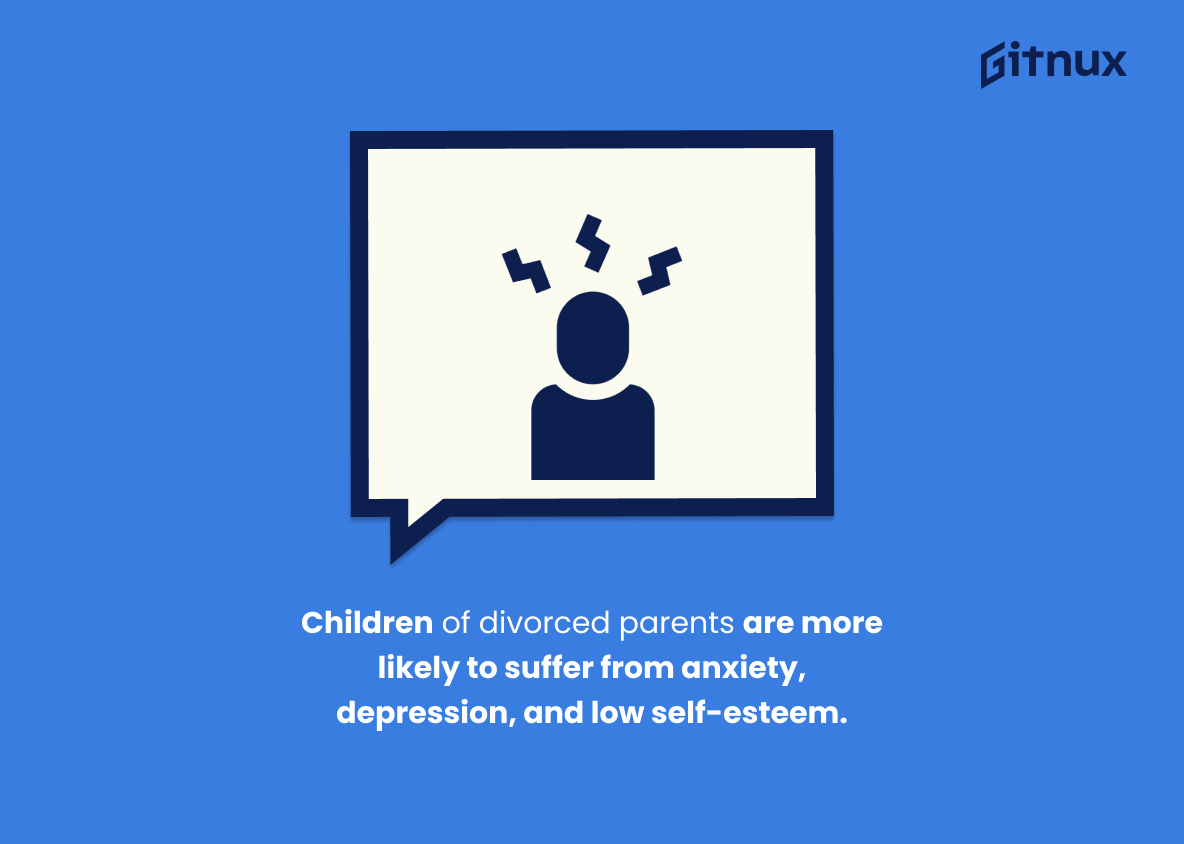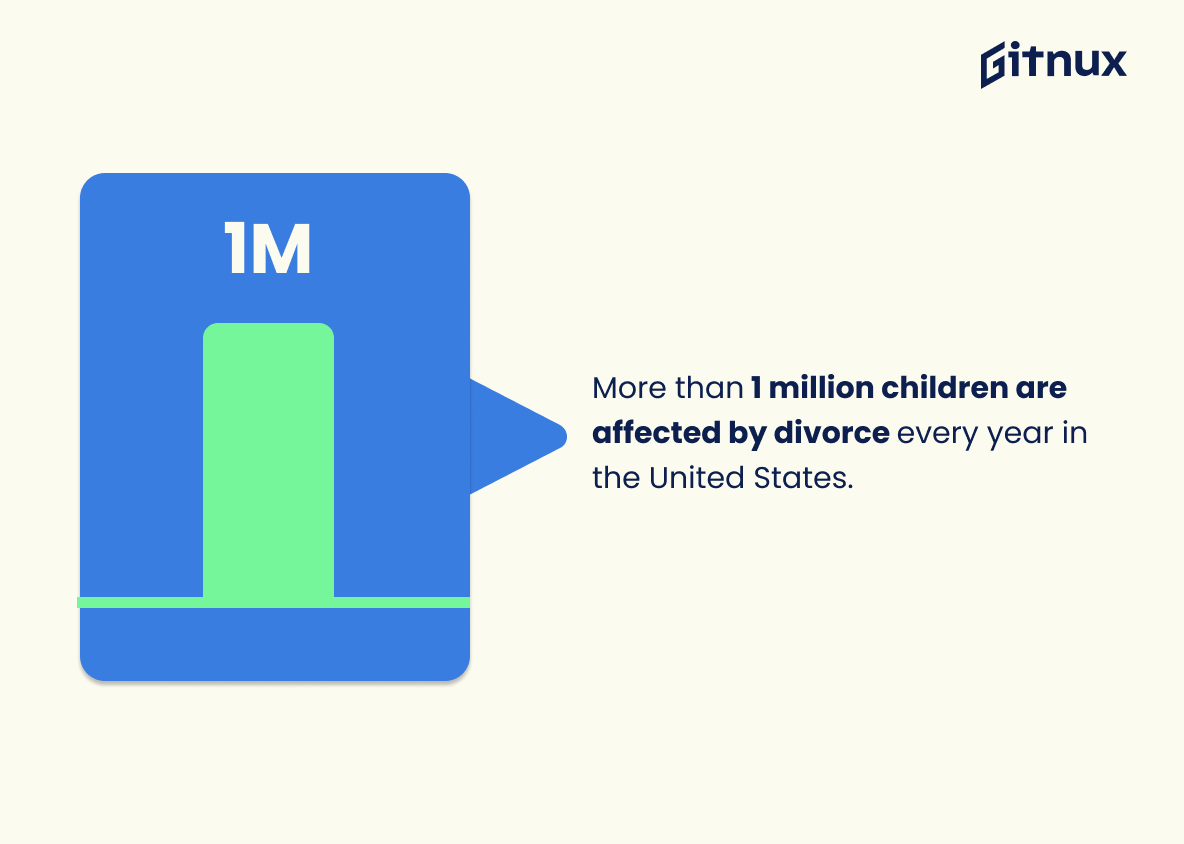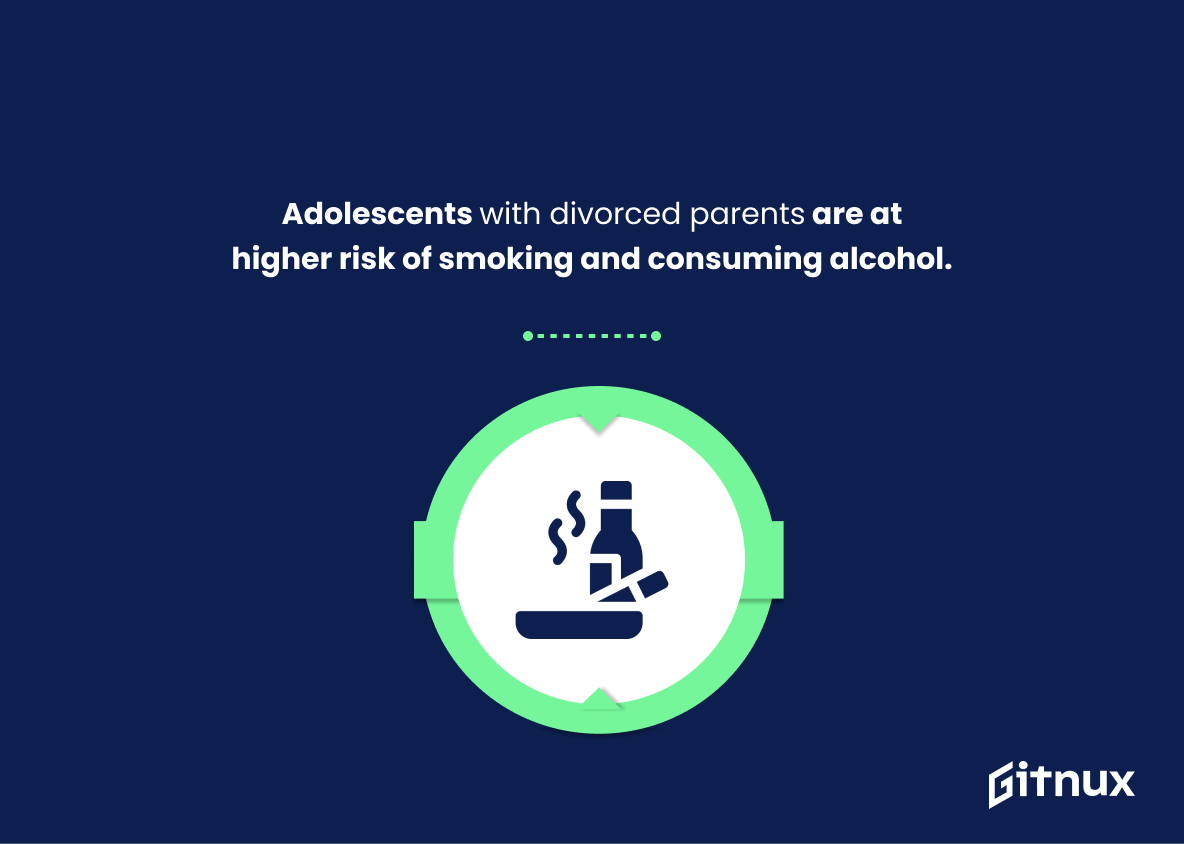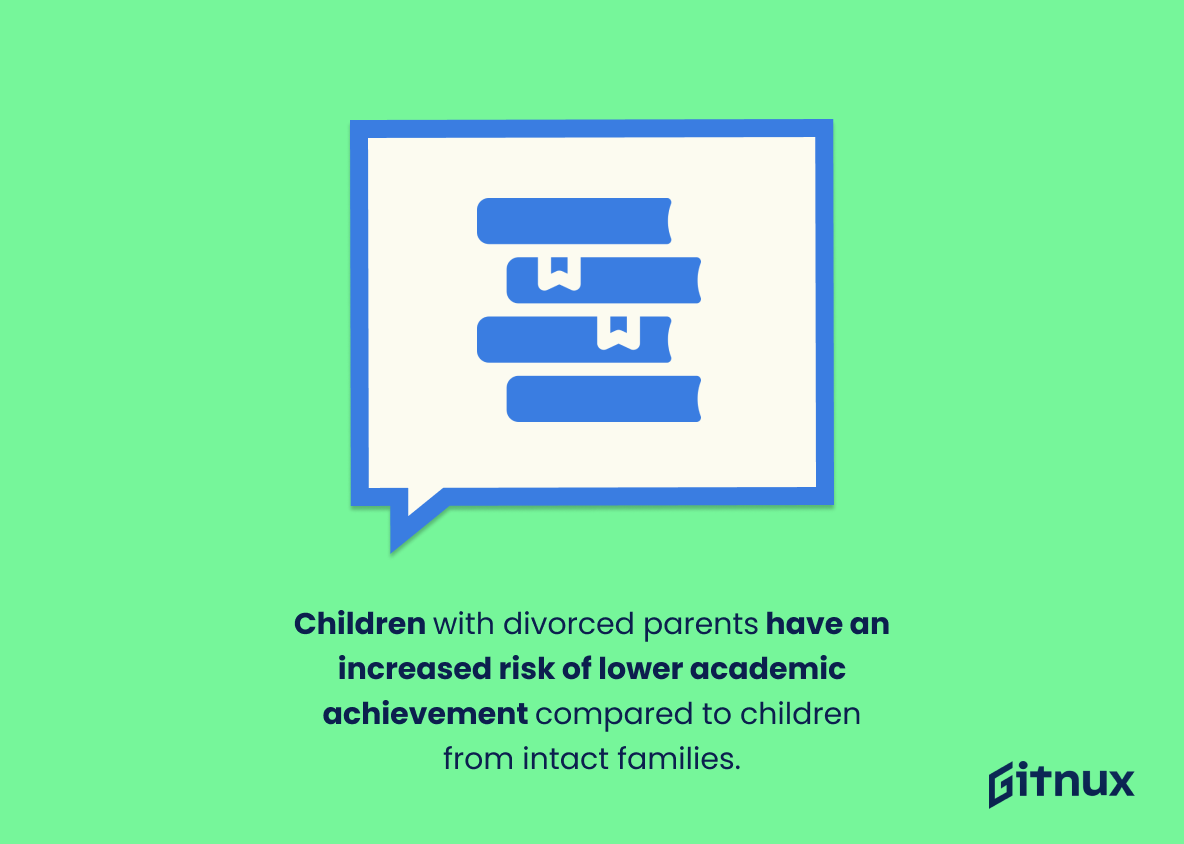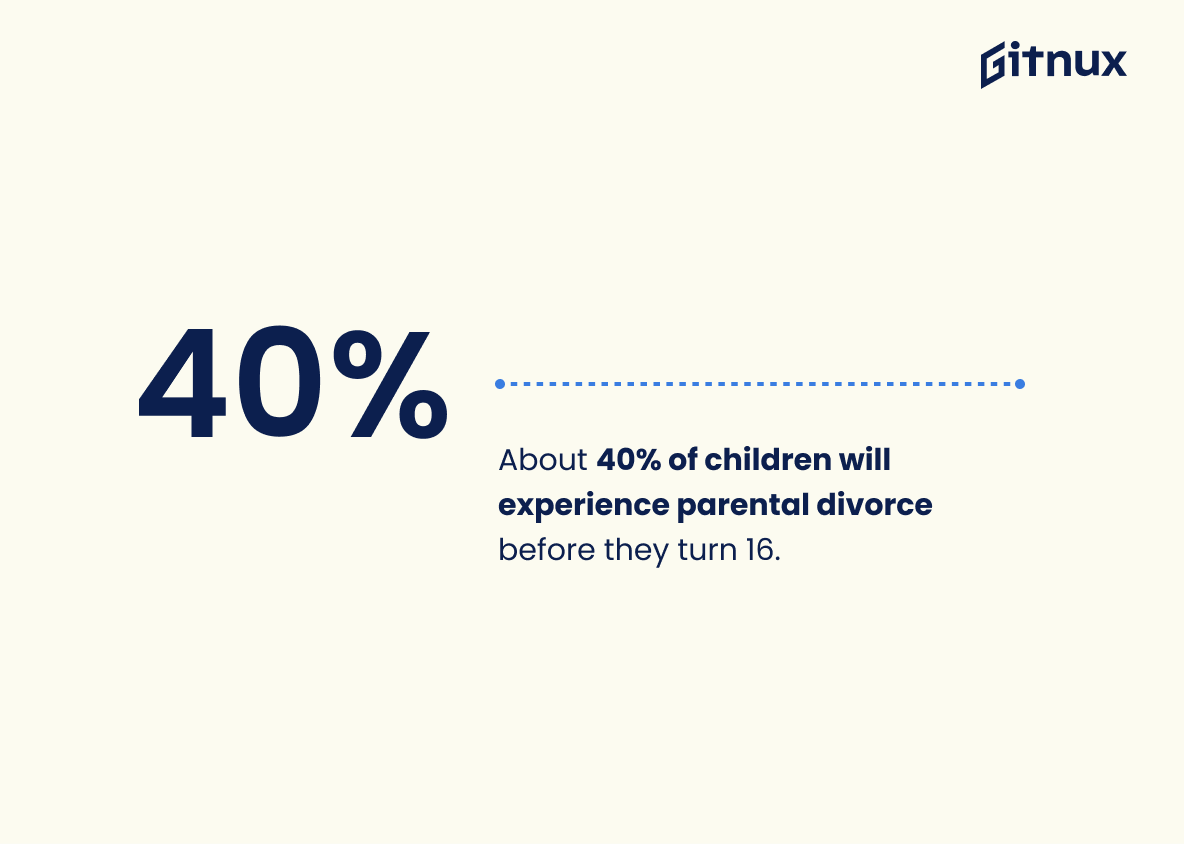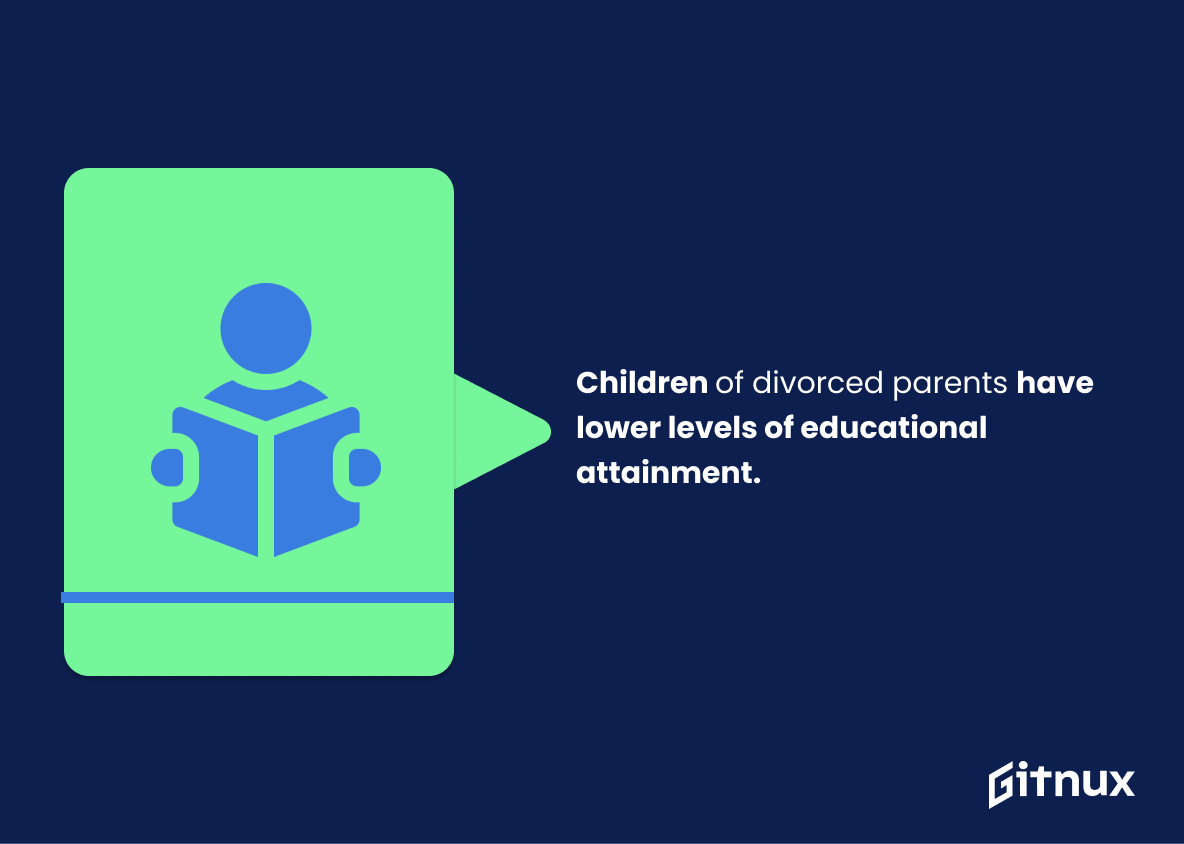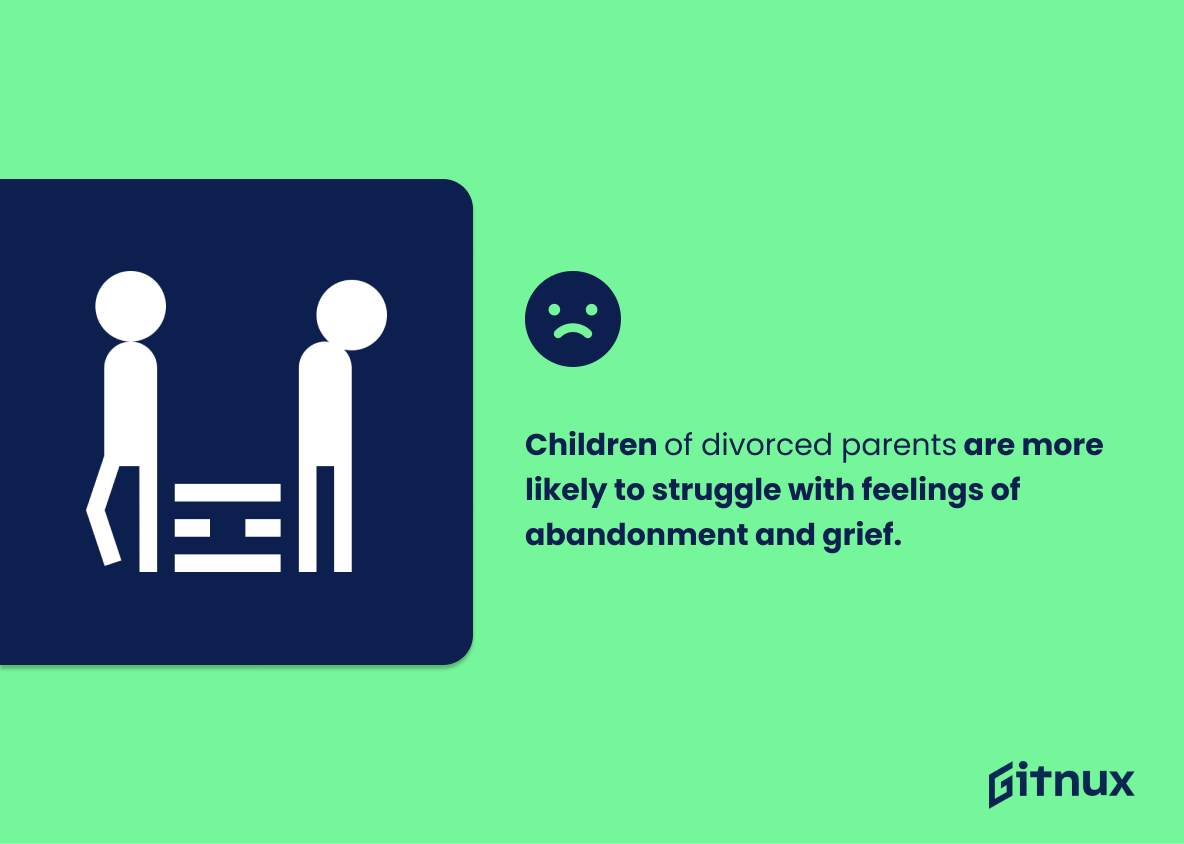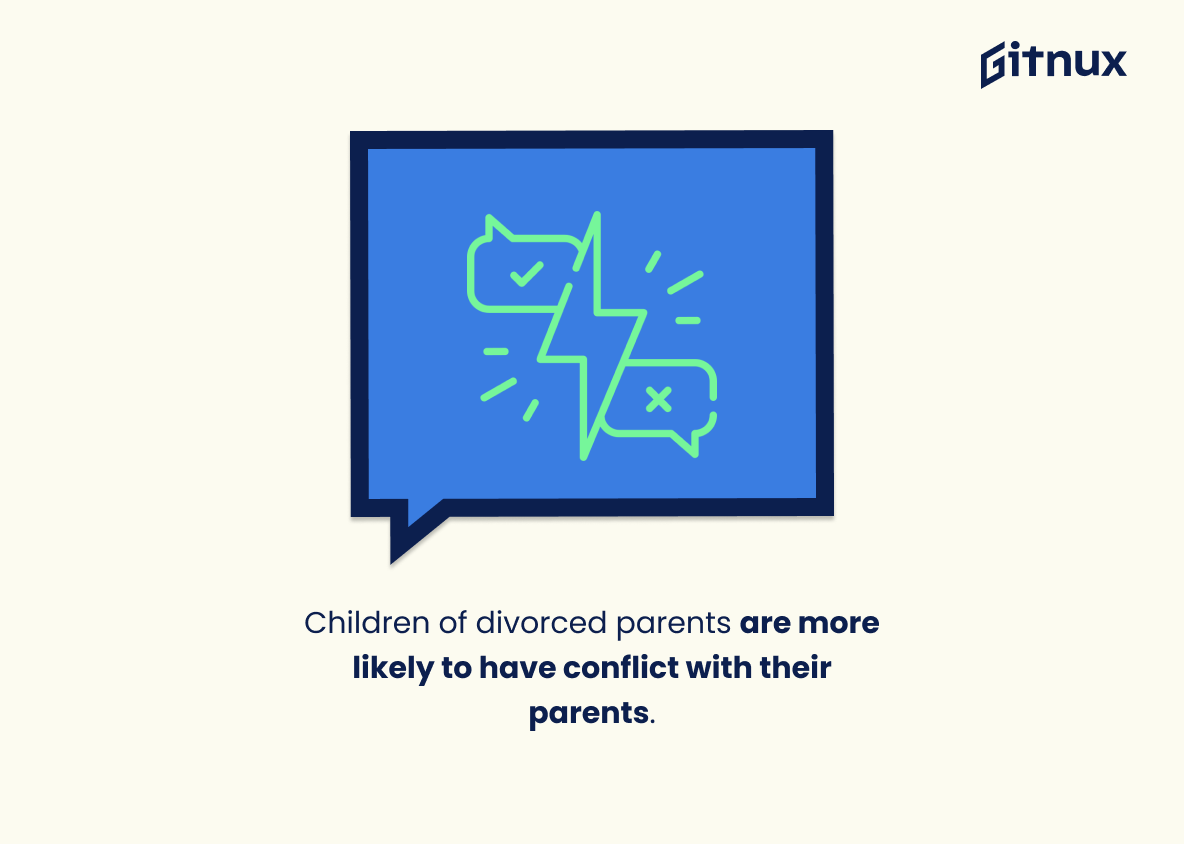The effects of divorce on children are far-reaching and long-lasting. Studies have shown that the statistics surrounding children of divorced parents paint a bleak picture, with higher risks for physical health problems, mental health issues, poverty levels, educational attainment and more. In this blog post we will explore 20 different statistics about how divorce affects children in various aspects of their lives.
This statistic is a stark reminder of the potential consequences of divorce on children. It highlights the importance of providing a stable and supportive environment for children of divorced parents, as the lack of such an environment can have a significant impact on their academic success. It also serves as a warning to parents considering divorce to consider the potential long-term effects it may have on their children.
Children of divorce have a 50% higher risk of developing health problems than children in intact families.
This statistic is a stark reminder of the potential health risks that children of divorce may face. It highlights the importance of providing children of divorced parents with the necessary support and resources to ensure their physical and mental wellbeing. By understanding the risks associated with divorce, parents can take proactive steps to ensure their children are not adversely affected by the separation.
Child Of Divorced Parents Statistics Overview
28% of children living with a divorced parent live in a household with an income below the poverty line.
This statistic is a stark reminder of the financial struggles that many children of divorced parents face. It highlights the fact that, even with two parents, a family can still be living in poverty. This statistic is a call to action for those who are in a position to help, to ensure that these children have the resources they need to thrive.
Children of divorced parents are more likely to suffer from anxiety, depression, and low self-esteem.
This statistic is a stark reminder of the potential psychological effects that divorce can have on children. It highlights the importance of providing emotional support to children of divorced parents, as they are more likely to experience mental health issues such as anxiety, depression, and low self-esteem. This information is essential for parents, educators, and other professionals to be aware of in order to ensure that children of divorced parents receive the necessary support and guidance.
By the age of 30, only 13% of children of divorced parents enjoy a high level of personal wellbeing.
This statistic is a stark reminder of the impact that divorce can have on a child’s wellbeing. It highlights the need for parents to be mindful of the emotional and psychological effects that divorce can have on their children, and to take steps to ensure that their children are supported and nurtured during this difficult time.
More than 1 million children are affected by divorce every year in the United States.
This statistic is a stark reminder of the far-reaching impact of divorce on children in the United States. It highlights the fact that divorce is not just an issue that affects adults, but also has a profound effect on the lives of children. It is a sobering reminder that the effects of divorce can be felt by an entire generation of children, and that the consequences of divorce can be long-lasting and profound.
Adolescents with divorced parents are at higher risk of smoking and consuming alcohol.
This statistic is a stark reminder of the potential consequences of divorce on children. It highlights the importance of providing a supportive environment for children of divorced parents, as well as the need for parents to be aware of the risks their children may face. It is a reminder that divorce can have a lasting impact on the lives of children, and that it is important to be mindful of the potential risks.
Children of divorced parents are 50% more likely to develop psychological issues such as aggression and defiance than those from two-parent families.
This statistic is a stark reminder of the potential psychological effects that divorce can have on children. It highlights the importance of providing a supportive environment for children of divorced parents, as they are more likely to experience psychological issues than those from two-parent families. This information can be used to inform parents, educators, and other professionals of the potential risks associated with divorce and the need to provide additional support for children of divorced parents.
Children with divorced parents have an increased risk of lower academic achievement compared to children from intact families.
This statistic is a stark reminder of the potential consequences of divorce on children’s academic performance. It highlights the importance of providing children of divorced parents with the necessary support and resources to ensure they can reach their full potential. By understanding the risks associated with divorce, parents can take steps to mitigate the impact on their children’s academic achievement.
About 40% of children will experience parental divorce before they turn 16.
This statistic is a stark reminder of the prevalence of parental divorce in today’s society, and the impact it can have on children. It highlights the need for greater understanding and support for those who have been affected by divorce, and the importance of providing resources to help them cope with the changes in their lives. It also serves as a reminder that divorce is not something to be taken lightly, and that it can have long-term consequences for children.
Children of divorced parents have lower levels of educational attainment, on average.
This statistic is of great significance when it comes to understanding the impact of divorce on children. It highlights the fact that children of divorced parents are more likely to have lower levels of educational attainment, which can have a long-term effect on their future prospects. This can lead to a range of issues, such as lower wages, fewer job opportunities, and a greater risk of poverty. As such, it is important to consider the implications of this statistic when discussing the effects of divorce on children.
Only 60% of adult children of divorced parents consider their relationships with their parents to be close.
This statistic is a stark reminder of the impact that divorce can have on the relationship between parents and their adult children. It highlights the fact that, even after the divorce has been finalized, the effects can still linger and have a lasting impact on the family dynamic. This statistic is a powerful reminder that, even after the divorce, parents and their adult children need to work hard to maintain a close relationship.
Children of divorced parents are more likely to struggle with feelings of abandonment and grief.
This statistic is of utmost importance when discussing the effects of divorce on children. It highlights the emotional toll that divorce can take on a child, as they may feel a sense of abandonment and grief due to the separation of their parents. This can have a lasting impact on their mental health and wellbeing, and it is important to be aware of this when discussing the statistics of children of divorced parents.
In a study of 17 nations, children of divorced parents showed a higher likelihood of conflictual relationships with their parents.
This statistic is significant in the context of a blog post about Child Of Divorced Parents Statistics, as it highlights the potential for increased tension between children and their parents in the aftermath of a divorce. It serves as a reminder that the effects of divorce can be far-reaching and long-lasting, and that it is important to be aware of the potential for conflict in order to ensure that children are supported and nurtured in the best possible way.
Conclusion
The statistics presented in this blog post demonstrate the significant impact that divorce can have on children. From a higher risk of dropping out of high school to lower levels of life satisfaction, it is clear that parental divorce has far-reaching consequences for children’s physical and mental health, educational attainment, financial stability, and relationships with their parents. These findings suggest that more needs to be done to support families going through separation or divorce so as to minimize any negative impacts on the wellbeing of their children.
References
0. – https://www.apa.org
1. – https://www.census.gov
2. – https://www.medium.com
3. – https://www.fatherly.com
4. – https://www.ncbi.nlm.nih.gov
5. – https://www.link.springer.com
6. – https://www.bgsu.edu
7. – https://www.ifstudies.org
8. – https://www.aamft.org
9. – https://www.pubmed.ncbi.nlm.nih.gov

